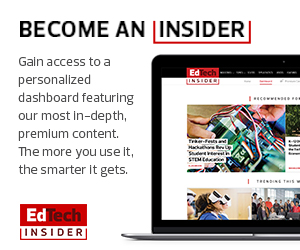Get the Right Tools for Remote Coaching
Technology is crucial for remote observation. At Pinecrest Academy Horizon, we use a tablet computer as a camera, videoconferencing software, Bluetooth headsets and Swivl motorized bases. Pair the headset to the tablet, place the tablet on a Swivl or base, and connect to a tripod. The motorized base enables you to move the camera to follow the action in the classroom. The teacher wears the headset to hear live feedback from the administrator handling the observation.
At Pinecrest, we went through trial and error before finding the tools that worked best for our remote observation vision. Find what works for you.
MORE ON EDTECH: Discover how E-learning supports on-demand instruction for K–12 schools.
Planning Is Key for Coaching Success
Understand that, at least initially, the approach might be uncomfortable for teachers. Explain, for example, that teachers need to carry on as normal. Students won’t hear the observer’s feedback, and they may not even know the remote coaching is happening.
An administrator or instructional coach should meet with a teacher before a remote coaching session to discuss the lesson and areas they will focus on improving. Explain that the entire session will be recorded for follow-up discussions and to help teachers see how their instruction improves over time.
Follow Best Practices for Privacy and Data Storage
The goal is to not only watch live classroom instruction but to also record the sessions. We share these videos internally through Google Drive.
Keep in mind that the videos are data you’re collecting. As you would with other sensitive information, have a process for deleting the footage after a certain period of time. Consider any relevant laws around third-party recordings and, if you plan to share the recordings, adhere to relevant privacy laws. At Pinecrest, we delete these recordings after each semester.











